What will the London skyline look like in the year 2145? That question was put to architects by Gleeds and childrenŌĆÖs charity the Transformation Trust as part of their charity auction competition. Visions of landmarks on stilts and dystopian wastelands were among the sketched responses.
Whatever your view on the plethora of striking buildings that have been added to the London skyline over recent decades - the Gherkin, the Shard and the Walkie Talkie among them - itŌĆÖs fair to say that the recent changes to the city would have been difficult to imagine even 25 years ago. So predicting what the capital could look like 130 years from now - with not just the passage of time and architectural styles, but the impacts of new technology, population growth, and climate change to contend with - is bound to provoke some extreme differences of opinion.
This question has been addressed - with wildly varying degrees of optimism and pessimism - by some of the UKŌĆÖs leading architects in sketches to be offered for charity auction next week. Architects including Wilkinson EyreŌĆÖs Chris Wilkinson and Ken Shuttleworth of Make, have contributed their visions of the future to be sold in aid of education charity the Transformation Trust.
The sketches, a selection of which are exclusively previewed here, range from leaning towards the utopian - a London surrounded by new parks and vistas, where residents fly to work - to the dystopian, with only the tallest buildings remaining, Ozymandias style, above a desert city. Somewhere in between these extremes is the vision expressed by Mark Goldspink of Purcell, whereby LondonŌĆÖs most iconic structures are raised into the air to ensure a future free of the constraints of viewing corridors, under an intriguing process known as ŌĆ£lollipoppingŌĆØ.
As part of the initiative, students were also invited to submit their visions of the future London skyline for a competition, which was won by BTEC art and design student Emin Zargarian from Brentside High School (EminŌĆÖs design is shown overleaf).
The professional architectsŌĆÖ sketches will be sold at an auction next week put on by consultant Gleeds, which is holding a fundraising week as part of its own 130-year anniversary celebrations.
Gleeds chairman Richard Steer said: ŌĆ£To think forward 130 years takes a special kind of imagination. London 2145 seems to have focused architectsŌĆÖ minds on a wide variation of influences, from the impact of population growth to rising sea levels. Some have thought well and truly outside the box, others have evolved the city from its current image.ŌĆØ
The money raised for the Transformation Trust will be used to support the charityŌĆÖs Inspire US 2016 programme, which, following a competition, will see 20 sixth form politics students from challenged backgrounds work as campaign interns for the closing fortnight of the US presidential elections.
Chief executive of the trust Amy Leonard said: ŌĆ£The Transformation Trust is all about helping disadvantaged young people discover - and then realise - their talents. All too often young people are at the back of the queue when it comes to accessing great opportunities that help them do this.ŌĆØ
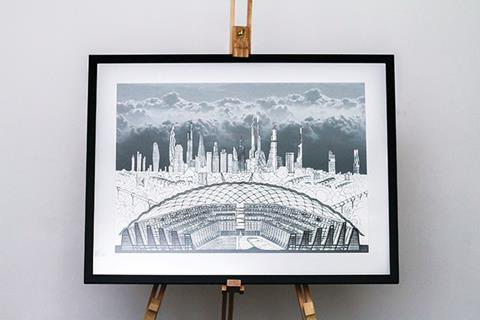
HLM
ŌĆ£Suburbia lies abandoned. Solar radiation from a degraded atmosphere and antibiotic-resistant bacterial strains have forced the population to live within self-sufficient cities, or ŌĆśarcology ŌĆÖ structures, which are inspired by Buckminster FullerŌĆÖs ŌĆÖ Old Man RiverŌĆÖ project. These colonies produce their own food and water and connect to the main city via maglev trains.ŌĆØ
Robert Joyce
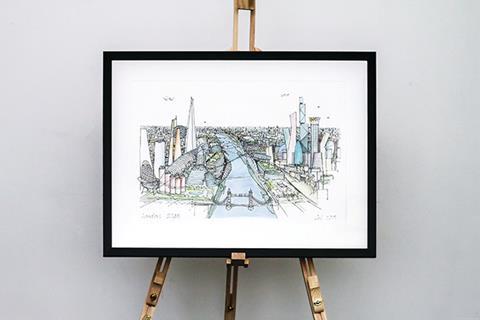
Wilkinson Eyre
ŌĆ£A look at London in the future with two main high rise clusters, one being the historic City and the other gathered around the Shard. The river is celebrated as public space, with floating green pontoons and there is a proliferation of lightweight enclosed pedestrian bridges linking buildings and places because the roads and pavements are too crowded.ŌĆØ
Chris Wilkinson
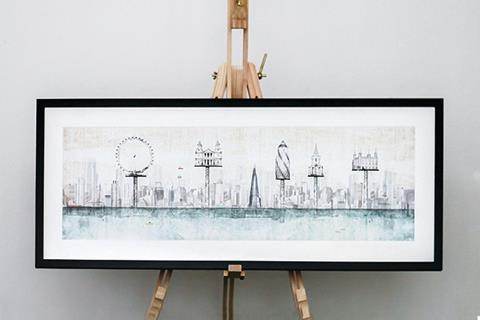
Purcell
ŌĆ£It is 2145. London is still the centre of the known world. While the sun doesnŌĆÖt yet orbit the city, its planning laws still revolve around its much loved heritage assets. In 2073, in a delicate operation which has since become known as ŌĆślollipoppingŌĆÖ, St PaulŌĆÖs Cathedral was raised 130 metres into the air. With its viewing corridors no longer a barrier to new development, LondonŌĆÖs skyline took on a new and exciting form.ŌĆØ
Mark Goldspink
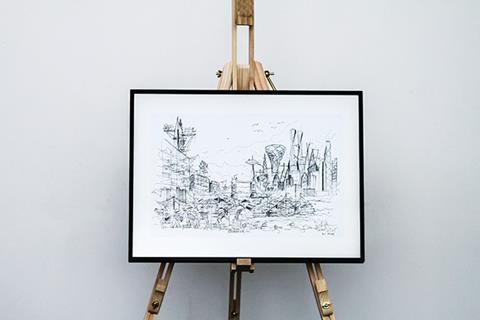
Make
ŌĆ£By 2145 London will have greater density to cope with population demands. Intelligent, multi-purpose buildings, from mid-rise to tall, will proliferate and ultimately transform how we work and live. The Shard could be extended at the top, while icons such as the Gherkin and Cheesegrater may well be listed. The Thames will be vibrant with domestic boats, and its banks will host vegetable gardens.ŌĆØ
Ken Shuttleworth
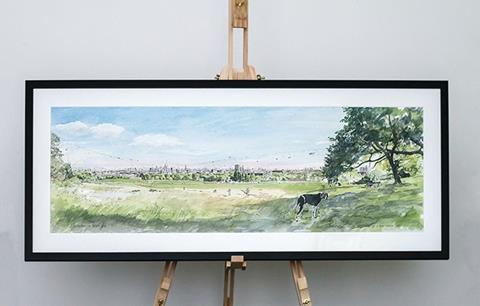
Levitate
ŌĆ£Parliament Hill, London, 2145. Limitless clean energy takes construction and transportation to the skies. Petrified by heritage and height limitations, the ŌĆśoldŌĆÖ city crystallises around todayŌĆÖs parks and streets. Vast new districts encircle old London, themselves focused around new parks and vistas. In 2145
we may fly to work but the dog will still need walking.ŌĆØ
Spencer Guy

Scott Brownrigg
ŌĆ£Global warming causes sea levels to first rise, then fall and evaporate. Temperate climates become deserts. Only the tallest buildings survive in economic and environmental collapse. Nature winsŌĆ”ŌĆØ
Neil MacOmish

Factory Fifteen
Inspired by the concept of the smart city, we extrapolated current architectural developments in London upwards and added new transport links over the sprawl. The image was created as a form of utopian future, playfully taking ideas that exist today to visualise what might be there tomorrow.
Kibwe Tavares
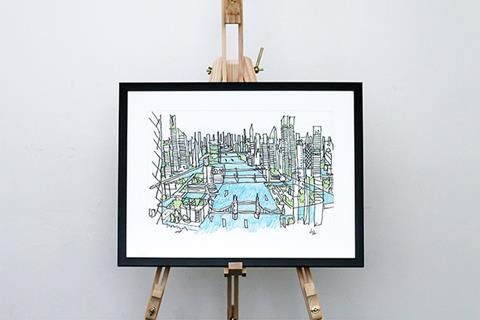
Glenn Howells Architects
By 2145 sea levels have risen by 3m above where they are today, population pressure has been somewhat eased by recent dramatic events so the capital has now only to deal with a reduced population of 25 million. London, as it has done many times over the last thousand years, has adapted to the changing conditions through developing new infrastructure allowing it to survive, whereas other low lying cities have been abandoned.
Glenn Howells

Holder Mathias Architects
By the year 2145, London has experienced several devastating floods, resulting in the loss of many meanders along the Thames. Small islands now remain, some of which have been turned into parks. Flood defence systems now line particular sections of the Thames. The City continues to dominate LondonŌĆÖs skyline, with new over-ground transport systems having relieved the congested under-ground network. A more direct link between the City and Canary Wharf for all forms of transport has been built, and a high-level cable car system links many of the tall buildings creating a new key corridor across the capital north to south across the Thames.
Stephen Hill
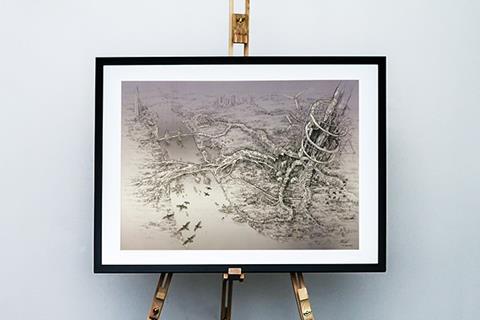
TP Bennett
The path of urban living in the third millennium will pursue two themes. The first is technological advance, with faster transport, new artificial intelligence and stronger, lighter, better materials. The second is nature with organic food, natural textiles, green walls and holidays in The Congo. These themes will combine and lead to taller build forms set amongst an organic landscape of inhabited artificial hills. These will provide space to bring nature back to our doorstep while maintaining New LondonŌĆÖs density of 12,000 people per km2.
Anna Boldina

WSP
For over 2000 years London has stood here, strong, eternal. Burnt to the ground once, it was rebuilt preserving its character; never different, only enhanced. 130 years from now, London will keep leading and embracing progress, but it will always remain true to its personality, its nature; true to its essence.
Diego Philipp

Squire and Partners
I was interested in a prediction of London as a city in 130 years, rather than estimating the appearance or height of individual buildings or clusters. One of the most iconic representations of London is the underground map, originally designed in 1908 and then turned into a diagram by Harry Beck in 1931. BeckŌĆÖs topological analysis of London represented the relationship of one station to another. I have used the underground map as a chassis upon which predictions of average building heights have been attributed to stations. Like BeckŌĆÖs map, which simplifies London into a two-dimensional diagram, I have added a third dimension grouping buildings into five building height categories to predict building heights on average in 130 years.
Murray Levinson

The Transformation Trust Winner (not for auction)
ŌĆ£I wanted to create a world in which a global economy adds to a fair and creative society in which the whole population can influence a humanitarian culture. I have used different subjects that I find inspirational such as films, books, nature and buildings to help me develop my vision.ŌĆØ
Emin Zargarian, student at Brentside High School
Studying: BTEC level 3 art and design, A-level graphics

The Transformation Trust highly commended (not for auction)
ŌĆ£Our lifestyles are depleting the worldŌĆÖs natural resources rapidly. Financial investments to fund space voyages is desperately needed to search for new materials. This new material will open our London skyline to new heights with elegance, though our colour palette may be limited, the architectural impact will not be compromised.ŌĆØ
Shamima Ahmed, Bishop Challoner Catholic Collegiate sixth form
Studying: Art & design, English language and literature, product design and psychology
To view more of the architectsŌĆÖ visions of the future, see our online gallery at www.building.co.uk. To make a silent bid for one of the images in the charity auction email amy.leonard@transformationtrust.org.uk before 6pm on Wednesday 2 December.



























No comments yet